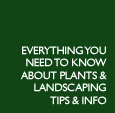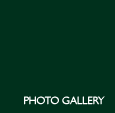Ponds
Around the world and through the ages, water features in a landscape design have been a symbol of tranquility and status. The practice of gardening in water has been recorded as far
back as 5000BC. Paintings from the time of ancient Egypt and the Pharaohs, show palace gardens filled with water lilies, lotus and other aquatic plants. The presence of water in a garden,
though out the centuries has delighted many with its serenity and its animation.
Many artists, such as Claude Monet, have appreciated the elegance of the effect light and water have on the visual perspective. You would only have to view paintings such as "Waterlilies", "The
Japanese Bridge" and "Boat at Giverny" to appreciate the art and grace of a water feature.
"There was a stream, that Epte, on the boundary of my property. I opened a ditch so that I could fill the little pond I had dug in my garden. I love water, but I also love flowers.
That's why, when the pond was filled, I wish to decorate it with plants. I took a catalog and made a choice off the top of my head"
-Claude Monet
As more and more people follow their interest and create a paradise in their own backyard, the interest in water gardening is exploding. A water garden offers a tranquil, low-stress
refuge, enhances the beauty of the landscape and increased property value.
Here are some tips to get the pond you want:
- Decide whether you would like a pre-formed starter pond, which is typically 18" deep and may be able to support fish in spring, summer and fall but due to the shallow depth,
you will not be able to overwinter the fish in these ponds. Also you may have problems supporting fish in these ponds if there is too much sun which will over heat the water and kill
the fish. Generally, these pre-fabricated ponds should be considered more of a formal water feature.
- Ponds for water gardening (24" - 30" deep) have shelves to support aquatic plant material. They could be pre-fabricated or hand-dug with a liner. These gardens are less
formal but more natural looking. These ponds generally are designed to be biologically balanced ponds, containing plants, snails and fish.
- A Koi pond are the most expensive and are usually quite a bit larger than other ponds, because they are designed for the well-being of the fish. Plants can be difficult to maintain
in these ponds, and therefore a water garden is often built attaching to koi ponds. They are usually 4'deep or more, with a bottom drain and a superior filtration system. There is
generally no shelves in a koi pond.
- A pond should be placed in an area where it can be fully enjoyed. They should be visible from the main viewing area, usually from the home or deck. Avoid low areas and allow for
runoff.
- Place the pond in a location where it will receive 6-8 hours of sunlight daily during the summer.
- Avoid placing ponds under foliage and other sources of debris, as it will require extra effort to remove from the pond.
- Consider the accessibility to electricity as this will be required to operate pumps, heaters and lights. Where underwater pumps or lighting is used, a ground fault circuit interrupter
should be installed.
- A professionally installed pond is always level. Use a string line level or a carpenters level, checking both length and width. Have a proper sub-surface drainage (sand) under
your pond.
- Consider how and to where the pond may overflow in heavy rainfall.
- The choice between a hand-dug flexible liner or using a preformed pond shell is easy to make once you analyze what you want the pond to accomplish. Flexible liner ponds allow for
more freedom of size, can support fish, and can look more natural, where as pre-formed pond shells are usually smaller and shallower so can not as easily support fish and are more
difficult to stabilize.
- Larger ponds are typically less work to maintain as they are more stable (chemically and thermally) and the larger filters take longer to get dirty. The starter pond is the most
difficult to keep clean.
- A filter is required for low maintenance and the health of fish. Ponds need cleaning, and the benefit of the filter is that it does that for you. Filters should be cleaned whenever
they slow the water flow to the pump. Larger, mechanical filters usually need cleaning about once a week, where smaller, in-pond filters may need cleaning daily. Biological filters,
on the other hand, should not be cleaned except when they are so blocked that water flow is completely diminished. This may only be once or twice a year.
- A pump is necessary to create fountains, waterfalls and to move water through filters. Splashing water is appealing for its beautiful and soothing sound and appearance and will
attract various birds. It will also discourage mosquitoes from laying eggs. To choose the appropriate pump for your size of pond, use this calculation.
- Calculate the volume of the pond in US GALLONS = length (in feet) x width (in feet) x depth (in feet) x 7.5
e.g. 15' x 10' x 1.5' x 7.5 = 1700 gallons
- The label on the pump will tell you how much water it can move.
- Fish are a nice attraction and will eat mosquitoes. They are quite easy to care for and help eat pond algae. However, too many will overload the filters and there will be more
fish health problems and algae problems. 5" of fish for every 5 square feet of surface area is a typical balance. A 10' x 10' pond could support 20 five inch fish, with some
room for the fish to grow.
- Green water is a sign that the ecosystem is not balanced. Plants, snails, sufficient filtration, pumps and beneficial bacteria should eliminate most green water problems and keep
the ecosystem in the pond balanced.
- If you are using rocks and gravel in your pond, know that it provides a huge surface area for bacteria to colonize. Keep the layer of gravel less than 1" thick to avoid anaerobic
conditions. Use granite gravel as opposed to limestone. Do not use rocks or gravel in deep koi ponds as they will interfere with the manual cleaning or bottom drains.
- Avoid using treated woods, copper, red wood, treated plastics and uncured cement. Avoid contaminating the pond with insecticides, herbicides, manure, calcium or limestone. Do not
use swimming pool liner, roof liner or children's plastic pools to create the pond.
- Overwintering fish in the pond can be done successfully in Southern Ontario, provided that the pond is 30-36" in depth, the pond is clean of all debris and organic free, the
pump is turned off, and there is a gas exchange hole in the ice. Fish hibernate, similar to bears, in that they store additional fat deposits in the fall and 'power-down' to preserve
themselves. Shallower ponds can also support fish in the winter, however it is best to build some sort of a 'greenhouse' over the pond to insulate it from the intensity of the winter.
- Overwintering hardy water plants is similar to overwintering fish, in that they will hibernate naturally. Some plants can freeze solid and survive the winter.
Natural Filtration
Plants provide a natural form of filtration in the pond. They absorb polluting chemicals and ammonia and there cleansing capabilities are almost endless. A general ratio, depending
on how much sun a pond receives is, 30-70% surface coverage and one bunch of oxygenating plants to every 2 square feet of surface. With this balance of plants and a moderate fish load,
one can achieve clean water without the addition of filters. Water plants are essentially divided into three groups.
- Oxygenator plants, also known as water clarifiers, feed on the nutrients in the pond that would otherwise feed algae.
- Marginal plants grow around the margin of the pond, either sitting on shelves or raised up on pedestals. Commonly used pedestals are made with stacks of clay bricks or chimney
flues. Marginal plants are an essential part of a ponds ecosystem because they can clean and shade the water.
- Lilies and Lotus provide abundant surface coverage, thereby starving algae from the sun.
FISH
Before Adding Fish
Fish require a safe aquatic environment to live in. They can not live in drinking water the municipalities have provided, as it contains disinfectants. Neutralizing these disinfectants
with a declorinator must be done before fish are added. A natural organic additive like Pondmorena and Beneficial Bacteria are added to stabilize a healthy pond.
Introducing the Fish to the Pond
To acclimatize your fish to the new pond environment, first float the un-opened bag (with the fish inside) in a shady area of the pond for approx. 20 minutes. If there is no shady
area, place damp newspaper over the bag. Then open the bag and over a period of 20 minutes add water from the pond to the bag or carefully pour the bags contents into a clean bucket
and add pond water to it. The amount of water added over a 20 minute period should be the equivalent to the amount previously in the bag. The proper method of releasing fish is to net
it and then place it in the pond or quarantined area.
Helping Your Fish Adjust
Your new fish will be stressed and must acclimatize itself to the new environment. This may take a few hours or a few days. Be considerate by keeping things quiet and slow around the
pond. This will help your fish relax. It is important to maintain a level balance of chemicals in the pond as well
pH: |
should be 6.8 to 8.5 |
Ammonia: |
no higher than 3mg/L |
Nitrate: |
0.5mg/L |
KH: |
5-12 degrees dkH is ideal |
Oxygen: |
8 ppm - 14 ppm |
Essential Food for Fish
A proper choice of food is essential to maintain the health of your fish. Food should be very digestible and vitamin enriched. Generally, the amount of food needed by your fish will
be consumed within five minutes. Over feeding can pollute your pond. The temperature of the water will influence the type and amount of food required. At a temperature below 63F (17C),
feed spirulina or wheat germ enriched low protein food. Above 63F (17C) feed with high protein food. Younger fish require more food than mature fish. An ecologically balanced pond may
require no feeding at all.
Temperature |
Feeding |
Below 12C (54F) |
no feeding |
13-15C (56-59F) |
every 2 days (soak food) |
16-18C (60-65F) |
once a day (soak food) |
19-29C (66-84F) |
1-3 times per day |
30C or higher |
stop feeding, add cool water |
Fish Diseases
Prevention is the best medicine. Stress is the reason for 80% if fish diseases, and may be due to water quality problems, dirty ponds, change in environment, or even harassment from
raccoons, squirrels, skunks or pets. When fish become stressed, they become particularly susceptible to disease and attack from the parasites that live with them.
To avoid disease and promote healthy fish, follow these guidelines:
- establish the pond before adding the fish
- don't add too many fish all at once
- don't overstock the pond with fish
- add beneficial bacteria after the fish are added.
- remove uneaten food to avoid rot in pond
- keep the pond clean, remove excess and foreign material that could harm the fish
- remember that fish grow, but filters don't.
- treasured collections of fish should never have new fish introduced without quarantining them first
Signs of Disease (any or all these symptoms may be present)
- fish appears to be covered in grey slime
- reddening on body
- clamped fins
- breathing heavy or fast
- flashing or sudden bursts of energy
- fraying or degenerating fins
- red or open sores
- hemorrhaging or bloating (pine cone effect)
- foreign item on or attached to fins
Signs of Stress
- fish are hiding
- not actively feeding
- listless on bottom or tucked away
- excessively mouthing at the surface
- clamped fins
- breathing quickly or hard
VERY IMPORTANT
ExperTrees can install and maintain your pond, to that your time is spent enjoying the pond and not working on it or in it. Our experience in installing ponds and the rocks and flora
around them will result in a very beautiful and natural looking pond where you will enjoy peace and tranquility for years to come.
MORE IMPORTANT
Check the utilities around the area you plan to install the pond. The numbers in Ontario are 1-800-400-2255 or 905-709-1717, fax # is 1-800-400-8876. Check local zoning regulations
for maximum depth allowed, otherwise requiring fences.
MOST IMPORTANT
ExperTrees wants to remind you that ponds should be treated in the same way as a swimming pool. They can be very dangerous for unattended children and pets, especially if you have
fish or waterfalls that will be very attractive to small children. It only takes seconds for a child to slip into a pond and drown. Appropriate supervision should ALWAYS be
provided.
|





